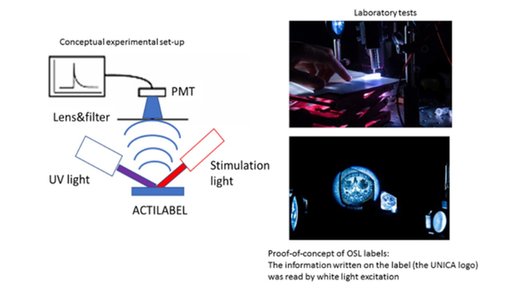Surely the waste of food is a scourge of our civilization. As a common consumer I’m often embarrassed when I discover that some items, normally meat, fish, kind of patè, are over (even for very few days) the expiring date indicated on the label. Sometimes also happens that an item (i.e. chicken, fish) smells bad before the expiring date. In a safe concern usually everything goes directly into the trash.
We interviewed Prof. Carlo Maria Carbonaro who is studying - together with his team - a revolutionary system to detect the real state of conservation of a food.
Prof. Carbonaro your team has developed a revolutionary system to detect the real status of conservation and expiration of a food in order to avoid wasting. Is it correct?
Yes, that’s true, our system is able to monitor the real conservation condition of a product through the whole distribution chain from the producer to the consumer.
How this intuition and the consequent research work was born and what about the involvement with ACTPHAST 4R?
The patented idea was born in our lab, when we were working on new materials for radiographic digital imaging. We found out that some materials once charged keep the stored information for long time, depending on the temperature. So that the idea to exploit these materials to monitor the conservation condition of a product. We studied the materials and analysed the performances with a lab prototype. Then we discovered the platform Actphast 4R where the ideas of the researchers can be developed with the aim to arrive to the market. We applied and we were selected as a pilot project and we are developing a hands-on prototype reading system, a sort of scanner for our labels.

Can you briefly describe this technology and advantages?
Up to now there are on the market different solutions to monitor the conservation status of a product, such as the Critical Temperature Indicator (CTI) and the Time Temperature Indicator (TTI). The first one records when threshold temperature is passed, the second one records the whole thermal history of the product. Our solution is an innovative TTI that can be interrogated with a proper device that reads an average temperature of conservation and from that can estimate the real shelf-life of the product.
In which step of the food chain does the technology work? Is it addressed to the dealer or to its supplier?
As said before, the technology is in the device that reads the information stored in our label. At the moment we wont to promote the use of the system (labels plus reading device) both for the dealers and the suppliers, since both of them can use the info on the conservation status of the food to guarantee the products or to elaborate new marketing strategies.
I understand that the technology foresees a powder applied to the label and a scanner?
The label is made of few milligrams of our patented powders embedded within a plastic envelope, about 0.5-centimetre square. The scanner can read through the plastic and convey the info to the reader.
What about the powder in terms of components? Of course, if this information is open.
The powders are silicates and fluorinates, the exact composition determines the time-temperature range of a specific label.
Of course, we do not ask the numbers, but what about the impact of the costs involved for the company?
We estimated that on mass production base the cost of the label is not larger than 10-euro cent. The scanner of course, since is the high-tech part of the system, costs a little bit more, but we have the idea to move the reading technology to a smartphone in the future perspective, thus opening the use of our labels to the consumers.
If this system takes place, of course this is our wish, this means impressive numbers in terms of quantities both for the powder and the scanner: what about the scale up status now? In which phase are you?
Yes, you’re right, a lot of labels and scanners, that’s way we’re planning a further development with the use of smartphones. At the moment we’re developing the scanner system within the ACTPHAST 4R platform.
In your opinion, is there a new sensitivity to the problem of food waste worldwide? Because the real challenge is to make this culture grow as much as possible in order to reach a mass awareness.
I think the we’re experiencing a new approach to the problem of sustainable economy, which means that people are aware that the resources we have are not infinite and that we need to be more green and circular in our development to avoid self-destruction. In this context the problem of food waste is crucial, not only because we’re wasting food whilst there are people dying of starvation, but also because we’re consuming our resources (such as water, for example) and producing a lot of pollution for the food production and distribution.
In a science fiction vision is it conceivable in the future a kind of portable scanner for every buyer?
It’s not a fiction vision but a real perspective that we are developing for our system, when the scanner will be replaced by our smartphone and everyone could read the real shelf-life of a product.






